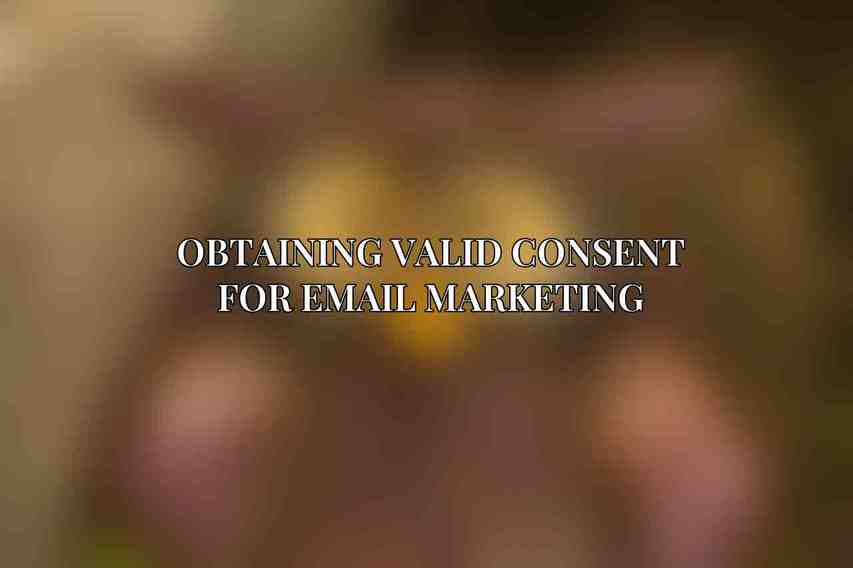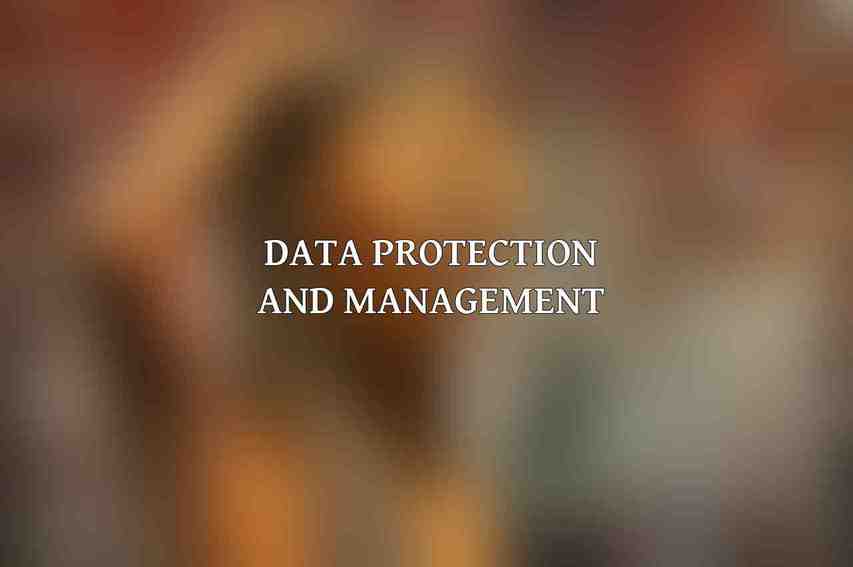The General Data Protection Regulation (GDPR) is a robust set of data protection laws that came into effect in 2018 to give individuals greater control over their personal data. The GDPR aims to harmonize data privacy laws across Europe and reshape the way organizations approach data privacy. The key principles of GDPR include transparency, accountability, and the protection of individuals’ rights regarding their personal data. The regulation applies not only to businesses within the EU but also to organizations worldwide that process data of EU residents. Read more on How to Effectively Segment Your Email List for Better Engagement
GDPR Compliance for Email Lists is essential for organizations collecting and using personal data for email marketing purposes. Ensuring compliance is crucial due to the potential heavy penalties for non-compliance, which can amount to significant fines based on the severity of the violation and the organization’s annual turnover.
Obtaining Valid Consent for Email Marketing

To comply with GDPR, organizations must obtain valid consent from individuals before sending marketing emails. Valid consent must be freely given, specific, informed, and unambiguous. It requires an active opt-in process where individuals actively agree to receive marketing communications. Organizations must also maintain documentation and proof of consent to demonstrate compliance in case of audits or inquiries.
Implementing strategies such as double opt-in confirmation, where subscribers confirm their subscription twice, can strengthen the validity of consent. Preference centers and segmentation allow subscribers to choose the type and frequency of emails they wish to receive, ensuring more targeted communication. Using explicit consent forms that clearly outline why and how data will be used helps in obtaining informed consent. Explore further with Top Tips for Building an Email Subscriber List from Zero
Data Protection and Management

When managing email subscriber lists, organizations must prioritize storing and processing personal data securely. This involves implementing measures like secure storage systems, access controls, and encryption to safeguard information. GDPR also emphasizes time limits for data retention, requiring organizations to delete data when it is no longer necessary for the purpose it was collected. Data minimization and purpose limitation principles should guide organizations in collecting only the necessary data for specific purposes.
Under GDPR, individuals have rights as data subjects that organizations must respect. This includes the right to access their data, request corrections, and even request deletion of their information. Moreover, individuals have the right to withdraw consent at any time, requiring organizations to stop processing their data upon withdrawal. Another critical right is the right to data portability, allowing individuals to obtain and reuse their personal data for their purposes across different services.
Auditing Your Email List for Compliance
Regularly auditing your email list for compliance is essential to ensure ongoing adherence to GDPR regulations. Audits help organizations identify and rectify any non-compliance issues proactively. The audit process involves reviewing consent records to ensure they meet GDPR standards, verifying data storage and retention practices, assessing compliance with data subject rights, checking for signs of data breach or misuse, and documenting audit findings for reference and future improvements.
Best Practices for Ongoing Compliance
Maintaining GDPR compliance for email subscriber lists requires continuous monitoring and improvement. Organizations should have a clear and comprehensive privacy policy that outlines how data is collected, processed, and used. Transparency about data practices builds trust with subscribers and demonstrates commitment to data protection.
Implementing data breach prevention measures and having an incident response plan in place can help organizations mitigate risks and respond effectively in case of a security breach. Transparency is key, and organizations should notify data subjects promptly in case of a breach to maintain trust and comply with GDPR requirements.
Continuous monitoring involves regular reviews of privacy practices, updates to policies and procedures based on regulatory changes, and staff training and awareness programs to ensure everyone in the organization understands their role in maintaining compliance.
Ensuring GDPR compliance for your email subscriber list is a continuous effort that requires commitment, attention to detail, and a proactive approach to data protection and management. By following best practices and prioritizing data privacy, organizations can build trust with subscribers, avoid hefty fines, and demonstrate respect for individuals’ rights over their personal data. Check this blog on A Complete Guide to Analyzing Your Subscriber List’s Performance
Frequently Asked Questions
What is GDPR?
GDPR stands for General Data Protection Regulation. It is a set of regulations that aim to protect the personal data and privacy of individuals within the European Union (EU).
Why is GDPR compliance important for email subscriber lists?
GDPR compliance is important because it ensures that individuals’ personal data is properly handled and protected. Failing to comply with GDPR can result in significant fines and reputational damage.
What steps can I take to ensure GDPR compliance for my email subscriber list?
To ensure GDPR compliance for your email subscriber list, you should obtain explicit consent from subscribers, provide opt-out options, securely store and manage data, and regularly review and update your processes. Dive deeper into Mastering Subscriber Retention: Techniques to Keep Your List Engaged
Do I need to obtain consent from existing subscribers to comply with GDPR?
Yes, under GDPR regulations, you must obtain explicit consent from existing subscribers if you do not already have a record of their consent. You should also provide them with the option to opt out of receiving further emails.
What are the potential consequences of non-compliance with GDPR for email subscriber lists?
Non-compliance with GDPR for email subscriber lists can result in hefty fines of up to 20 million euros or 4% of global annual turnover, whichever is higher. Additionally, non-compliance can damage your organization’s reputation and trust among customers.

